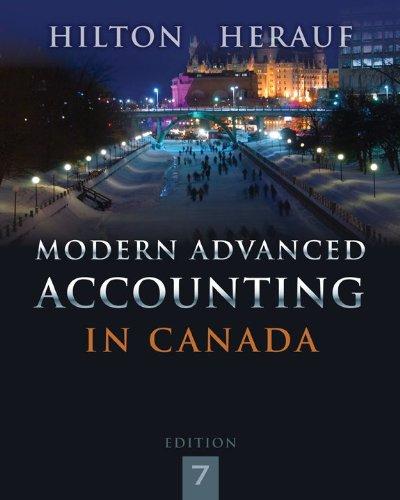On January 1, Year 3, the Most Company purchased 80% of the outstanding voting shares of the
Question:
-1.png)
On January 1, Year 3, Least€™s plant and equipment had a remaining useful life of 8 years. Its long-term liabilities matured on January 1, Year 7. Goodwill, if any, is to be tested yearly for impairment. The balance sheets as at December 31, Year 9, for the two companies were as follows:
-2.png)
Additional Information
€¢ The inventories of both companies have a maximum turnover period of one year. Receivables have a maximum turnover period of 62 days.
€¢ On July 1, Year 7, Most sold a parcel of land to Least for $100,000. Most had purchased this land in Year 4 for $150,000. On September 30, Year 9, Least sold the property to another company for $190,000.
€¢ During Year 9, $2 million of Most€™s sales were to Least. Of these sales, $500,000 remains in the December 31, Year 9, inventories of Least. The December 31, Year 8, inventories of Least contained $312,500 of merchandise purchased from Most. Most€™s sales to Least are priced to provide it with a gross profit of 20%.
€¢ Most and Least reported net income of $1,000,000 and $400,000, respectively, for Year 9.
€¢ During Year 9, $1.5 million of Least€™s sales were to Most. Of these sales, $714,280 remains in the December 31, Year 9, inventories of Most. The
December 31, Year 8, inventories of Most contained $857,140 of merchandise purchased from Least. Least€™s sales to Most are priced to provide it with a gross profit of 30%.
€¢ Dividends declared on December 31, Year 9, were as follows:
Most............ $350,000
Least............ 100,000
€¢ Goodwill impairment tests resulted in losses of $52,200 in Year 4 and $8,700 in Year 9.
€¢ Assume a 40% tax rate for both companies and that dividends have not yet been paid.
Required:
(a) Prepare the consolidated statement of changes in equity for Year 9.
(b) Prepare the consolidated balance sheet.
(c) Explain how the cost principle supports the adjustments to inventory when eliminating unrealized profits from intercompany sales from the consolidated financial statements.
(d) If Most had used the parent company extension theory rather than the entity theory, how would this affect the debt-to-equity ratio at the end of Year 9?
Goodwill is an important concept and terminology in accounting which means good reputation. The word goodwill is used at various places in accounting but it is recognized only at the time of a business combination. There are generally two types of...
Step by Step Answer:

Modern Advanced Accounting In Canada
ISBN: 9781259066481
7th Edition
Authors: Hilton Murray, Herauf Darrell





